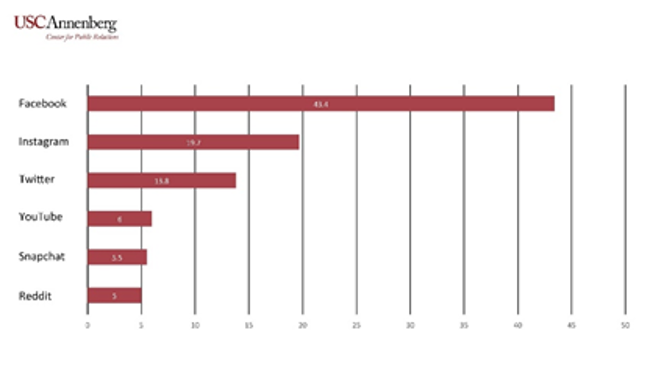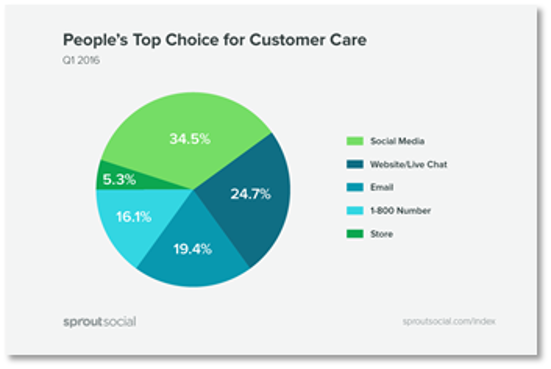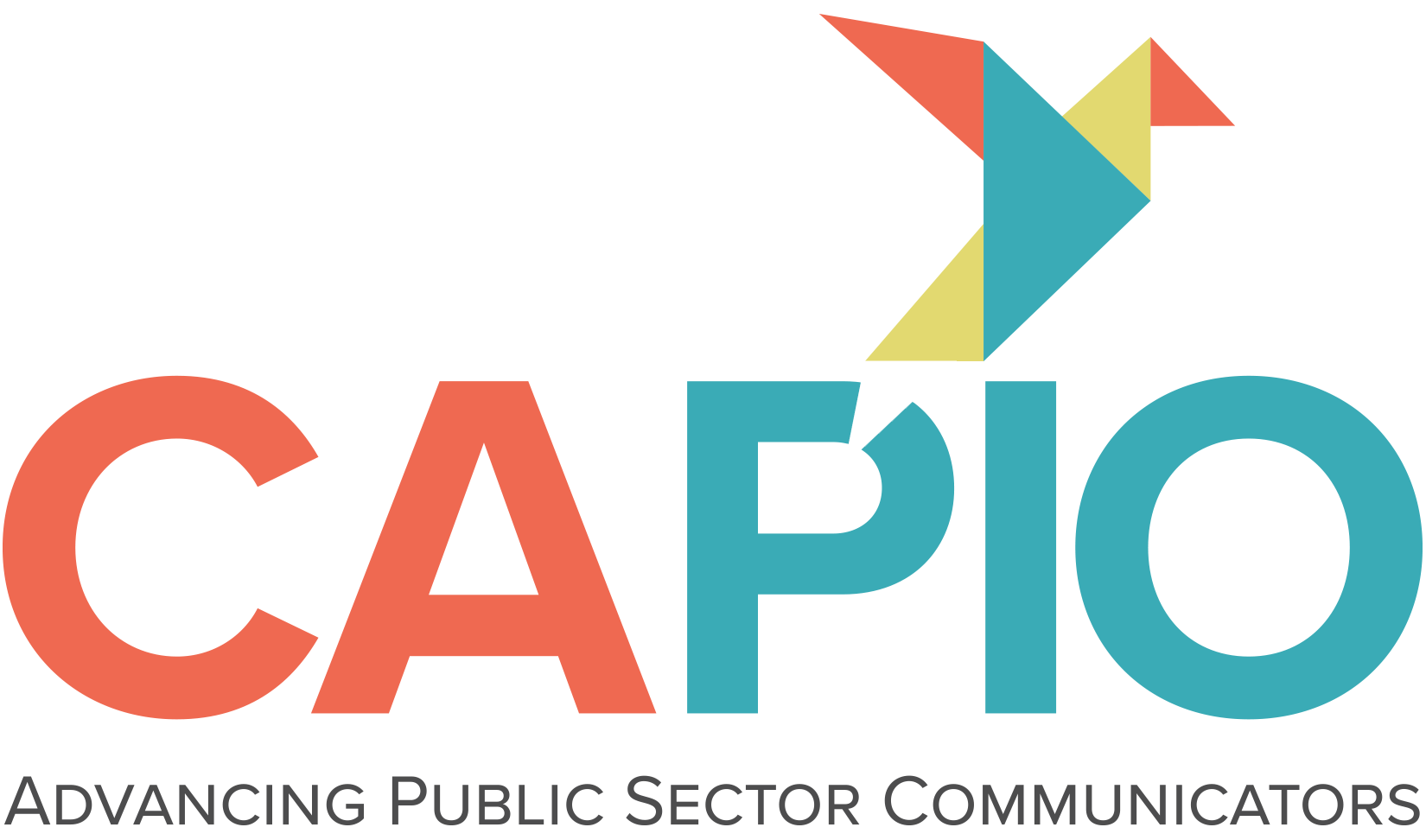Digital trends for the new decade
There’s a lot happening in the ever-evolving world of social media. With the constant development of new apps and social media platforms, it can be a challenge to know what bandwagon to jump on, and when. Some gain popularity then fizzle out as fast as they came, while others hold strong and continue to evolve along with their consumers’ interests.
As public communicators, it’s important to be aware of the trends that are catching the attention of our communities and customers, so we can respond with relevance. Equally as important is the responsibilities we have as public communicators to make the best decisions for our organizations, audiences and resources.
So, where is social media going in 2020 and what trends should public communicators have on their radar?
In the new decade, content is increasingly becoming more about
short-lived “stories,” private/group messaging,
micro-influencers, authentic, engaging content, and customer
service. 
Here are some key takeaways to consider for 2020:
Facebook and Instagram will continue to dominate in 2020.
In USC Annenberg’s Annual Relevance Report for 2020, survey data of 1000 people showed 94 percent of those under 30 said they will post on social media this year, and most said they will post on Instagram.
“But Instagram is overpowered by another social network—Facebook: an overwhelmingly powerful platform,” said Fred Cook, Director at USC Annenberg, Center for Public Relations. “It’s going to remain a hugely relevant brand in 2020.”
Private channels are building deeper relationships.
In 2020, expect to see thought leaders, industry leaders, and major influencers switching their focus to private messaging, aiming for more direct and engaging conversations to deepen their relationships with their audience.
While brand promotion, news dissemination, and service/product education continues to thrive on public feeds, “The future is private,” Mark Zuckerberg declared in 2019.
In response to the consumer’s demand for more intimate social experiences and privacy, Zuckerberg envisions unity between Messenger, Instagram, and WhatsApp, spotlighting the use of private channels to nurture relationships with and between customers. Headspace, a meditation app, for example, uses a closed group on Facebook to facilitate conversations between their members. However, they keep the group free from product placement, advertising, and fundraising, allowing the focus to remain on their community’s interaction with each other, thereby protecting the relationship and gaining trust between their brand and its customers.
Micro-influencers are dominating campaigns.
Nano or micro-influencers with close-knit or niche audiences based on interests and industries are on the rise. According to the State of the Influencer Marketing Report, micro-influencers are seeing a 9 percent growth acceleration over the past year and online reviews are more influential than ads.
Rebeca Perren, assistant professor in social media and global marketing at Cal State San Marcos, points to a statistic from the report that notes, “In 2019, ninety percent of all branded partnerships were with influencers who have a fan base of 5,000 to 30,000 followers.” Perren has seen that these micro-influencers are able to reach their highly-engaged audience on a more emotional and authentic level and speak to their values because they already have a dedicated and trusting fan base who are following their content.
“The emphasis on “followers” as your main social media measurement is long gone. It’s all about engagement now.” says Tom Christensen, Communications Specialist with County of San Diego. “Having 20,000 followers who pay no attention to your messaging does you no good. But if you have a group of engaged followers that interact with your content, your message will spread organically and reach more people.”
Customers find social media a convenient communication and customer service tool.
Your organization may be experiencing a greater number of
customer service requests through social media channels. One
important aspect of delivering a great customer experience is
meeting customers where they are and when they want it.

“Residents want answers to their questions, solutions to their problems, or sometimes just want to be heard,” says Christensen. “Rather than wait in line at a government office or call your customer service line and be put on hold, they can fire off a private message or a public post requesting assistance and get help rather quickly without ever leaving their home or taking time off work.”
And with the integration of chatbots in Messenger and shoppable posts on Instagram, customers are able to make purchases and get their questions answered fast and conveniently, without ever leaving the app.
Innovative technology is becoming more accessible.
Christensen shared his on-the-job takeaways in using new technology to reach the community. “AI, AR, and VR will be the new big trends in the years ahead. Several government agencies deploy Artificial Intelligence to handle constituent interactions. Virtual Reality and Augmented Reality will change the way you interact with your followers and allow you to provide online experiences like never before. In San Diego County, we’ve been doing virtual reality tours of parks trails for a couple of years now with great success. One of our tours has over 1 million views. They let hikers know what a trail is like before they get in their car and head out for a hike.”
Unscripted, ephemeral content is on the rise.
“It’s a very interesting time for government agencies in relation to social media,” observes Christensen. “We’re kind of at a crossroads between what has been our traditional, reliable platforms like Facebook, Twitter and Instagram and newer platforms such as Snapchat and TikTok. The newer platforms are capitalizing on people’s short attention spans and the need for entertainment.”
According to Hootsuite’s Social Media Trends 2020 Report, TikTok’s short, highly entertaining video clips are influencing pop culture and digital content because they “feature real people doing fun, creative things.” This authenticity is appealing to the younger generation, Generation Z, who is shifting away from the carefully staged, manufactured content appearing on other social media channels.
“The rise of unscripted, ephemeral content gives a window into the people behind the brand, offering authenticity to audiences,” notes Perren. What’s more is this content is faster and cheaper to produce than professionally produced content and is ultimately driving more engagement.
Leveraging the authentic approach, Instagram’s “Stories” now rivals TikTok’s features, allowing users to set 5-second clips, then share them in their “Reels”, allowing creators to add music, text, interactive polls, and calls to action. These short-lived stories allow users to share real-time experiences that are in-the-moment and create the sense of urgency to interact before it disappears. On another note, “With privacy concerns on the rise, people are attracted to content that disappears after 24 hours,” states Perren.
“Unfortunately, the newer platforms provide some pitfalls for governments when it comes to things like records retention (like Snapchat’s disappearing messages) and the inability to provide sometimes needed context to your messaging,” Christensen reminds us.
